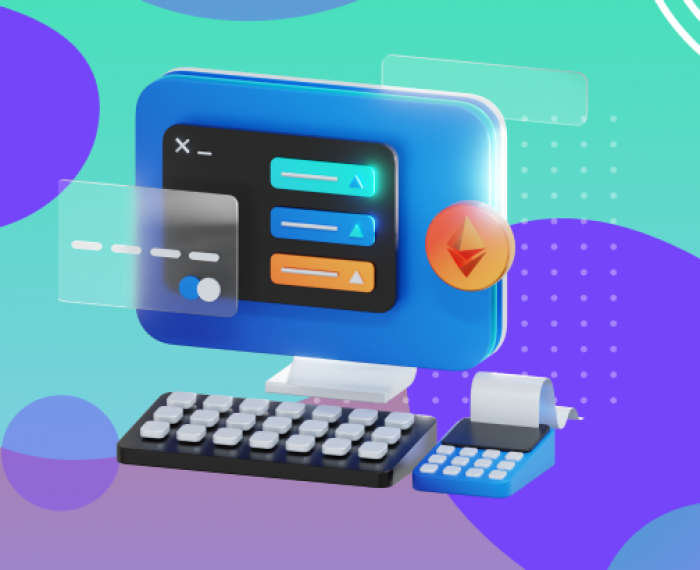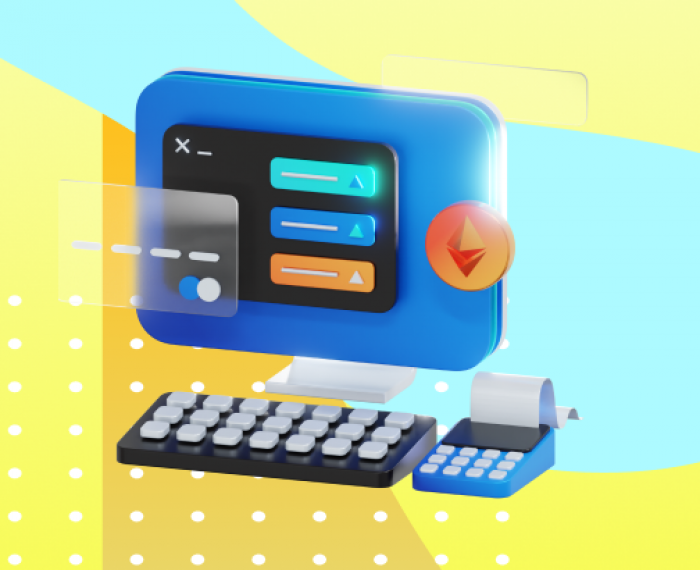
All types of mining: does cloud mining work?
When blockchain projects were just emerging and not yet widely used, users had enough ordinary CPU capacity to mine cryptocurrency. But as the industry developed and the number of miners grew, the difficulty of mining increased, requiring more powerful devices.
Cloud mining allowed users who do not have large amounts of money to invest and do not have access to cheap electricity to mine cryptocurrencies with rented equipment. In this article, we explain what cloud mining is, how it differs from mining with your own equipment, and compare these types of mining.
What is cloud mining and how does it differ from traditional mining?
As the hashrate of blockchain networks grew, cryptocurrency began to be mined using graphics processing units (GPUs) and specially designed mining devices (ASICs). The problem was that, due to the high hash rate, the minimum threshold for entering mining increased significantly: it would take at least $1000 to buy a productive ASIC miner, and the cheapest video cards for mining cost several hundred dollars.
But there were other hurdles as well, such as the high cost of electricity and problems with the placement of miners. To provide the opportunity for mining to people with limited access to cheap electricity and to solve problems with the maintenance of devices, cloud mining of cryptocurrencies was introduced.
Cloud mining is the mining of cryptocurrencies using rented equipment that relieves the user of the tasks associated with placement, maintenance, and repair.
Let us look at the main criteria you need to rely on when choosing a crypto mining method.
Cost
Cloud mining stands out for its low entry threshold: one contract can be purchased for $10. To purchase ASICs that will be profitable, you will need a minimum of $1000 in investments, not counting the cost of maintenance and repair.
But contracts have a limited duration, unlike purchased equipment, which can last for several years. The service life will depend on the operating conditions: if they are violated, then the devices will deteriorate faster.
Service
When purchasing their own equipment, the user will have to independently locate, install and configure it. In addition, miners need to be serviced and repaired from time to time. This is especially true for hand-bought devices: there is still a risk of an early breakdown of the equipment since the buyer does not know how the previous owner operated the equipment.
When you rent equipment, the company does all the maintenance, and renters only pay a service commission. All you have to do is pay the contract and receive the revenue. There is no need to configure the miner and perform other actions.
Conditions
If you buy ASICs or a mining farm, you will need to place the equipment in your own living quarters or look for a place to install it. You can use hosting services, but in this case, maintenance costs will increase, but this way you can get access to cheaper electricity.
By purchasing cloud contracts, you rent equipment that is already installed and working, so you do not need to think about placement and maintenance. You only pay the service commission, which includes electricity bills.
Revenue
Unlike mining on your own hardware, cloud contracts are bought for a limited period: usually, that’s 1 – 3 years. Therefore, the payback period will differ, but there are also perpetual contracts, but their cost is much higher, as well as the service fee.
To calculate the payoff period of the purchased equipment, use the following formula:
Price_miner / (Profitability_miner / month – Payment_for_electricity / month)
The formula for calculating the revenue will be similar, except instead of paying for electricity, you need to substitute the amount of the service commission, and instead of the cost of the miner you use contract price:
Contract_Price / (Profitability_contract / month – Service_collection / month)
Note: the profitability of cloud mining contracts, as a rule, is calculated by the service itself, and the profitability of ASICs or GPUs can be calculated using an online calculator on the WhatToMine or NiceHash website.
Advantages and disadvantages of cloud mining
One of the main advantages of cloud mining is convenience: the user only pays for the contract, and the company takes care of the rest. No need to worry about equipment placement, setup, and maintenance.
In addition, you eliminate the risks associated with possible breakdowns of mining equipment and denial of service, and you will not bear the cost of repairs – all this is taken into account when calculating the commission of the service that provides cloud mining services.
The second plus of cloud mining is access to cheap electricity. In some regions, electricity bills are so high that mining income will barely cover energy costs, and hosting services can be expensive.
But before deciding on the choice of the mining method, you need to take into account the disadvantages. When mining on your own equipment, even if the price of the cryptocurrency has dropped significantly and the cost of the mined coins does not cover the cost of electricity, the cryptocurrency will still go to the wallet balance, unlike with cloud mining. If the profitability of the contracts is less than the service fee, then the funds will no longer be credited to the account, and you will incur losses. This is one of the main disadvantages of cloud mining compared to conventional mining.
When demand for crypto mining is high, which often occurs during an uptrend in the crypto market, the contracts are often bought out and are no longer available for new users to purchase. It will take some time to find available cloud contracts, and you will need to monitor the available deals on the service pages regularly.
Comparison table of cloud and classic mining
| # | Mining on your own equipment | Cloud mining |
| The minimum entry threshold is | $10 | $1000 (you can buy miners for $50, but their performance will be inferior, and it is not a fact that they will pay off – additional calculations are required). |
| Terms of service | The user places, installs, configures, and monitors the equipment. | The service is engaged in maintenance and repair, and the user only receives and withdraws profit |
| Additional costs | The user pays for electricity, is responsible for replacement of failed spare parts, and repairs the equipment at his own expense if the warranty period has expired | Miner pays a service commission, which includes electricity fees and maintenance costs of equipment for crypto mining |
| Payback period | Miners pay off faster since the user only bears the cost of electricity consumption, but provided that the equipment does not need repair | Contracts take longer to pay off because, in addition to electricity bills, the service commission includes maintenance costs. |
| Simplicity and comfort | Users take care of equipment maintenance themselves. Heat generation (especially during hot periods) and noise in small rooms can cause discomfort. | Users do not do unnecessary work. After purchasing a contract, miners immediately bring income that can be withdrawn at any time. |
| Withdrawal conditions | Users have no withdrawal restrictions if they are solo mining, which is especially convenient for crypto trading. If you mine cryptocurrency in a pool, the conditions will depend on the selected pool. | For withdrawal, as a rule, you need to accumulate a minimum amount. The gained profit can be reinvested, that is, you can buy more contracts. |
| Terms of accruals | Cryptocurrency continues to accrue, even if electricity costs do not pay off. | With negative profitability, crypto earnings cease to be credited to the account |
Is cloud mining profitable now?
Yes, cloud mining is profitable as cryptocurrencies have skyrocketed in value over the past year. For example, the price of Bitcoin since March 2020 has risen from $3,800 to $57,000, and Ethereum’s from $ 100 to $ 4,600. Therefore, the demand for cloud contracts has grown so much that they are quickly bought out.
In any case, buying a mining contract may be more profitable than purchasing equipment if your region has high electricity costs. But before making a decision, it’s best to calculate the profitability first.
The best cloud mining services
You need to be careful when choosing a company to buy contracts: many previously popular services were closed because they were associated with fraud or did not comply with the legal requirements of the AML (Anti Money Laundering) policy. We have compiled a list of popular cloud mining services in 2021.
ECOS
This is a service that only supports BTC cloud mining. The site has a mining profitability calculator, but it does not take into account the service commission, therefore, to assess the profitability, you will have to calculate it yourself. Users can manage their accounts in a convenient mobile application.
HashMart
Service supports the purchase of cloud mining contracts for Bitcoin and Ethereum for fiat currency and digital assets. A distinctive feature of this service: the absence of additional fees for the withdrawal of cryptocurrency and the purchase of contracts.
Hashshiny
Besides Bitcoin, the HashShinny service supports Ethereum mining contracts plus handles Zcash, Dash, and other cryptocurrencies. Users can participate in the referral program, and customers are provided with a 5-day trial period for cloud mining.
Genesis Mining
One of the few surviving cloud mining services, Genesis Mining offers fixed and flexible contracts with customizable hash rates. A significant disadvantage of the service is the high cost of service fees and the lack of customer support.
Hashing24
Another veteran cloud mining company founded in 2016. Hashing24 does not have its own equipment: the company resells BitFury’s. This makes the cost of commissions volatile.
Conclusion
Cloud mining is suitable for those who do not have large amounts of money to invest and/or do not want to take care of the maintenance themselves. Moreover, this method is an alternative solution for those who do not have access to cheap electricity.
However, consider the risks associated with mining with rented equipment: the complexity of the network is constantly increasing, which decreases the profitability of mining devices over time. At the same time, if the cost of cryptocurrencies drops so much that it no longer covers the service commission, then the revenue stops flowing, unlike with mining on your own mining farm or ASIC.



